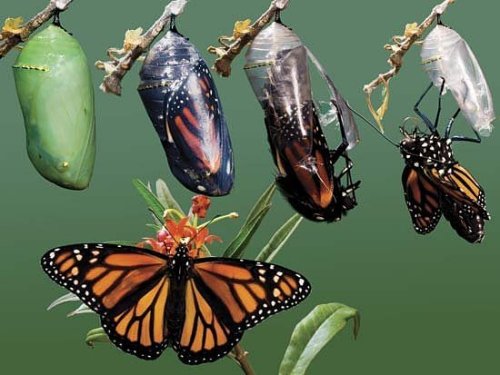The amount of land occupied by the migrating creatures shrank 59% from a year ago, scientists say. The decline could hurt tourism and the ecosystem.
MEXICO CITY — Scientists who take the annual measure of Mexican forestland famously occupied by migrating monarch butterflies said Wednesday that the butterfly population is the smallest they have seen in two decades.
The likely cause is unseasonably warm weather recently in the United States, as well as a dramatic loss of habitat in the U.S. Corn Belt, the scientists said.
In a survey carried out in December and January, researchers found nine monarch colonies wintering in colonies wintering in central Mexico, occupying a total of 1.19 hectares, or 2.94 acres, a 59% decrease compared with the previous year's study.
It was troubling news for the Mexican states of Michoacan and Mexico, where the yearly arrival of the butterflies is a major tourist attraction. Of even greater concern, experts say, is the potential impact that a diminished butterfly population could have on interconnected habitats and species across North America.
The results were released by the World Wildlife Fund, the Mexican government and giant Mexican cellphone company Telcel, which has supported butterfly habitat conservation.
The measurements do not mean that the Mexican habitat is disappearing; rather, measuring the area that the butterflies occupy is the best way to estimate their numbers. Precise figures are hard to come by, but 1 hectare may contain as many as 50 million butterflies.
The yearly figures can fluctuate greatly because of variations in the weather. But Chip Taylor, director of the research group Monarch Watch at the University of Kansas, said the numbers have generally been trending downward.
Taylor said the decline is due in great part to the widespread use of the herbicide glyphosate. In key U.S. states where the butterfly feeds and breeds — Iowa, Minnesota, Wisconsin, Illinois, Indiana, parts of Ohio and the eastern Dakotas — farmers have planted more than 120 million acres of corn and soybeans genetically modified to resist the herbicide, he said. That allows them to use glyphosate to kill milkweed, the monarchs' essential food.
Taylor said the decrease in the monarch population is more than a philosophical or aesthetic conundrum. The loss of pollinating creatures like butterflies and bees — whose populations are also collapsing because of habitat loss — can result in a loss of plant diversity across the continent, he said.
"The fruits, nuts, seeds and foliage that everything else feeds on," he said. "If we pull the monarchs out of the system, we're really pulling the rug out from under a whole lot of other species."
The dramatic winter presence of tens of millions of hibernating monarchs about two hours' drive northwest of Mexico City was little known outside the region until 1975, when the monarchs were "discovered" by a Canadian zoologist. The Mexican government created a biosphere to protect the insects in 1986.
The butterflies make their way from the U.S. and Canada, usually arriving in Mexico around the beginning of November, clustering by the thousands in the boughs of fir trees. Although the same trip occurs every year, no individual butterfly makes it twice, as the butterfly's life span is too short. How the migration route lives on in the butterflies' collective memory is an enduring scientific mystery.
In Mexico, the government and some nonprofit organizations have worked to discourage illegal logging and encourage tourism that will not harm the butterflies. In the United States, Monarch Watch encourages gardeners to purchase $16 seed kits for growing milkweed and nectar plants the butterflies need. The seeds have been planted in more than 6,000 areas certified by the group as monarch "waystations" since 2005.
Taylor said Monarch Watch is working on broader-scale solutions, including a system of getting large numbers of milkweed plants to native plant societies and other conservation groups around the U.S.

Monarch caterpillar feeding on milkweed

Caterpillar morphing into pupa

Pupa metamorphosing into adult Monarch
